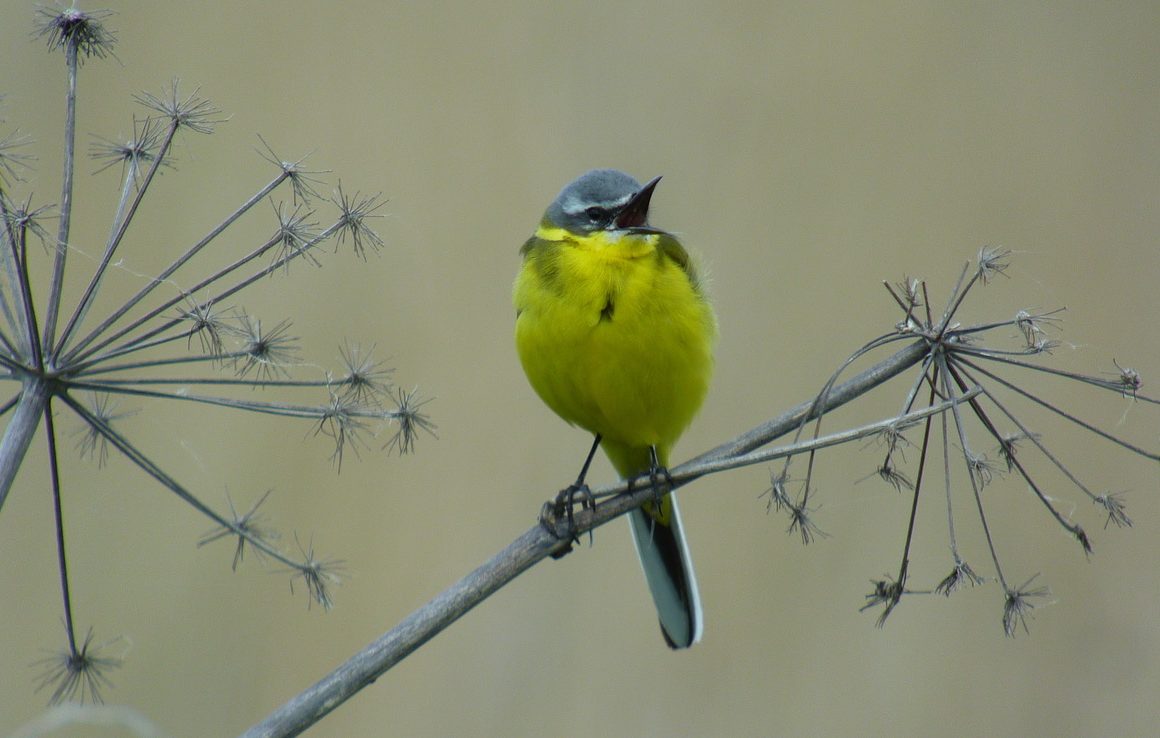
Few birds are as confusingly named as the three species of wagtails we see regularly in Britain. The best-named is the Pied Wagtail, the commonest of the trio, for an adult male in spring plumage is distinctively pied black and white, though juveniles and adults in winter sport plumage that looks decidedly grey. The Pied Wagtail Motacilla alba yarelli – is a UK special, for it breeds exclusively in the British Isles. Its continental counterpart, the White Wagtail M.alba, is one of the most widespread breeding birds in Europe, for it can be found virtually everywhere, from Arctic Norway all the way south to the Mediterranean, though curiously it doesn’t breed on the Spanish Balearic Islands, nor Corsica or Sardinia.
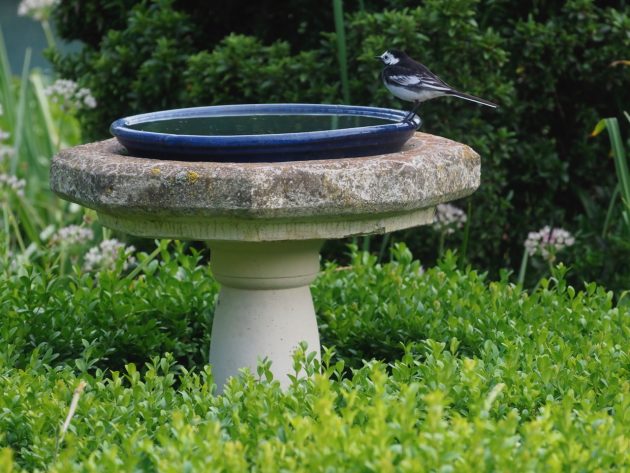
Pied Wagtail, yarelli (England, May). They often come into gardens
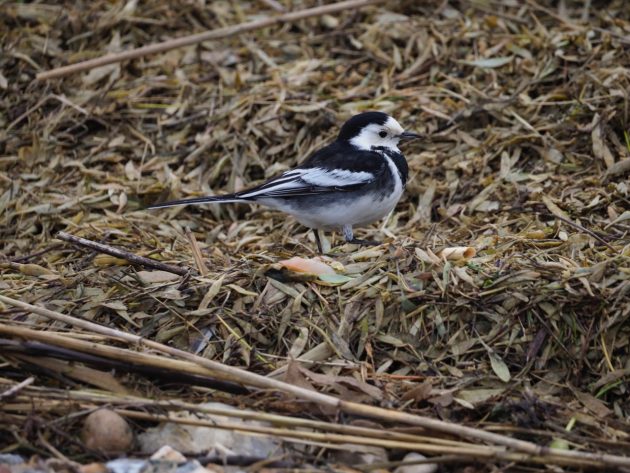
Pied Wagtail, yarelli (England, December)
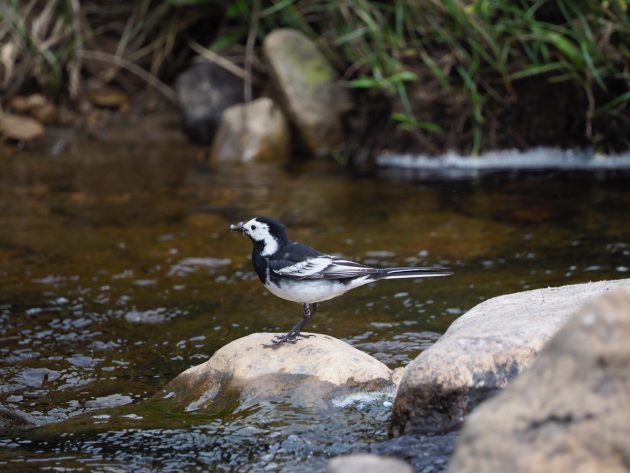
Pied wagtail, yarelli (England, June)
The White Wagtail isn’t well named, for there’s nothing very white about it. It would really be much better named the Grey Wagtail, but we already have a Grey Wagtail. Presumably the latter was given this name because of its distinctive grey back. However, Grey Wagtails display a distinctive splash of yellow on the vent throughout the year, so it would really be more appropriate to call them yellow wagtails. The trouble is that name is already taken by the Yellow Wagtail, the scarcest of the trio, and a declining summer visitor to Britain. In spring, when they first arrive back from their wintering grounds in sub-Saharan Africa, the breasts of male Yellow Wagtails are a dazzling shade of yellow. This fades during the summer, and by autumn it’s hard to see anything more than a pale lemon wash on the underparts, while the young birds show only the slightest hint of colour.
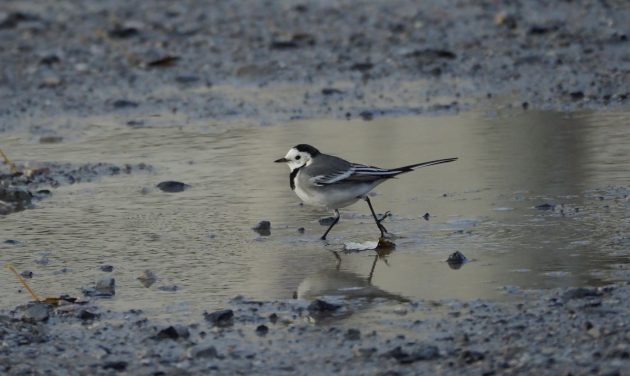
White Wagtail, alba (Greece, December). The grey back is distinctive in all seasons
The Pied is much the most familiar of the trio, for it’s a widespread bird that regularly come into gardens, if not to bird tables. These jaunty wagtails like open areas, for they are attracted by lawns and golf courses, even roads and roofs, where they can be seen running furiously after insects. They like farmyards, too, with muck heaps providing a favourite feeding ground.
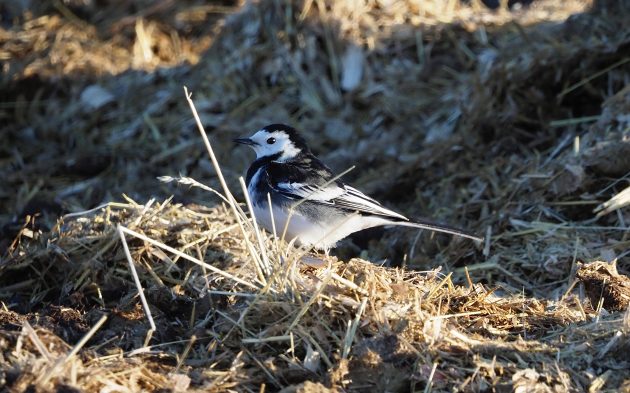
All the wagtails live up to their name by wagging their tails almost continually, though nobody really knows why. In the autumn it’s not unusual to see flocks of pied wagtails feeding together, while they also like to roost communally. They will gather in favoured trees, often in city centres, where as many as 100 birds will cluster together, looking for all the world like Christmas decorations.
My favourite of the wagtails is the Grey, for they are exceedingly elegant birds, with a distinctly long tail. They are typically birds of streams and fast-flowing water, though they will wander far from streams on occasions. Their call is a distinctive double note, very similar to that of the Pied Wagtail but higher-pitched. It’s often the call that alerts you to their presence, for they invariably call when flying. Interestingly, Grey Wagtails used to be rare birds here in Suffolk, and they only started nesting regularly in the county in the middle of the last century.
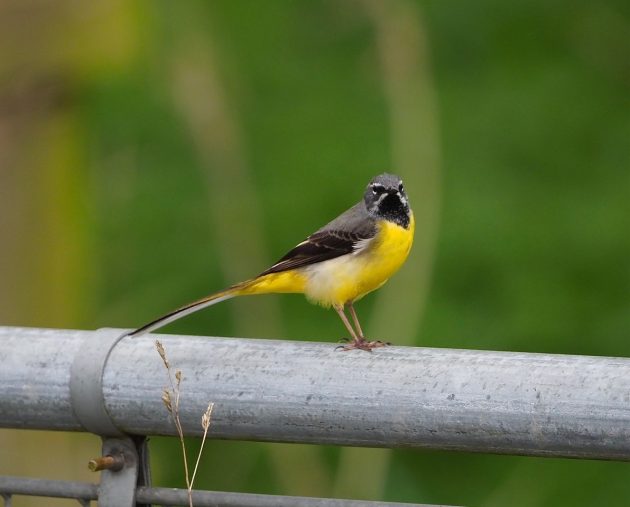
Adult male Grey Wagtail in breeding plumage (England, April). They are birds that prefer fast-flowing streams and rivers, but they are adaptable and wander in winter
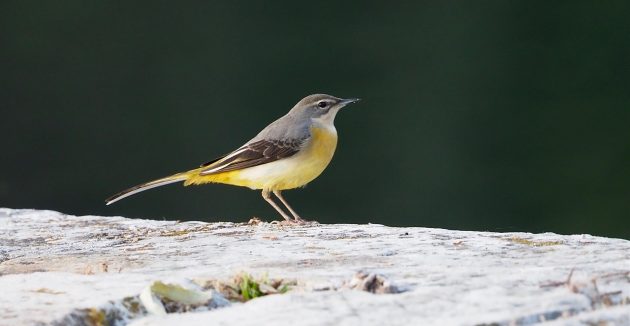
Grey Wagtail in non-breeding plumage (Kefalonia, Greece, October). In autumn the yellow loses its intensity, and the black bib gives way to a white throat
Grey Wagtails have a huge breeding range, extending right across Europe and Asia, and even breeding in Northern Japan. I’ve seen flocks of wintering Grey Wagtails in Sri Lanka, and I once saw a single bird several thousand feet up on Mount Kinabalu in Borneo, a familiar bird in an unlikely setting.
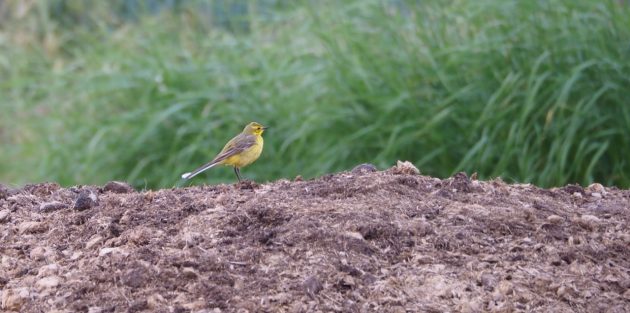
Yellow Wagtail, flavissima (England, June). This race breeds almost exclusively in England and Wales
Once a common bird, the Yellow Wagtail has declined rapidly in the UK in recent years, and what used to be a locally common summer visitor is now a very scarce breeding bird. Their preferred habitat ranges from damp pastures (not something we have much of in Suffolk, which is one the driest counties of the British Isles) to marshes, and they often feed in association with cattle.
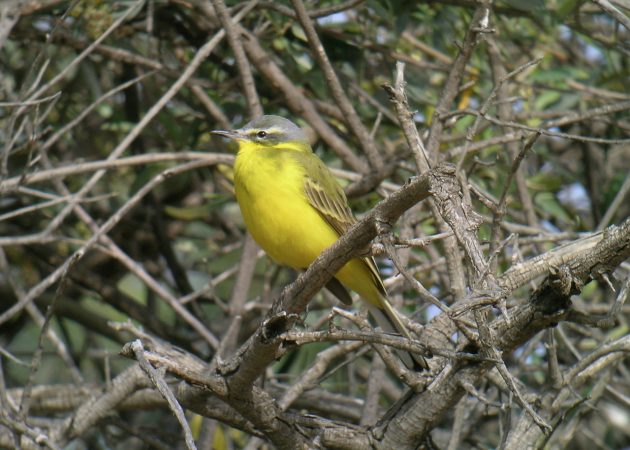
Blue-Headed Yellow Wagtail, flava (Cyprus, March)
There are just 12 species of wagtails in the World, and all are members of the Motacilla. What both the White/Pied and the Yellow have in common is a great variety of sub-species: there are 11 recognised sub-species of both wagtails. Here in the UK we have our own subspecies of Yellow Wagtail, Motacilla flava flavissima, which with its yellow head is one of the least flashy members of the family. The widespread bird on the continent is M.flava, which we call the Blue-headed Wagtail: individuals not infrequently over-shoot and turn up in southern England.
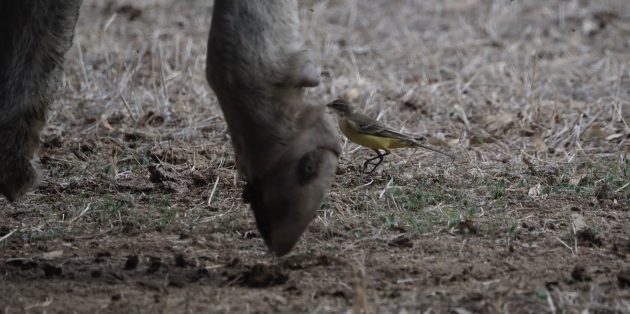
Yellow Wagtail, flava, in autumn (Greece). They frequently feed in company with cattle. Note the lack of colour, which is typical of these birds in autumn
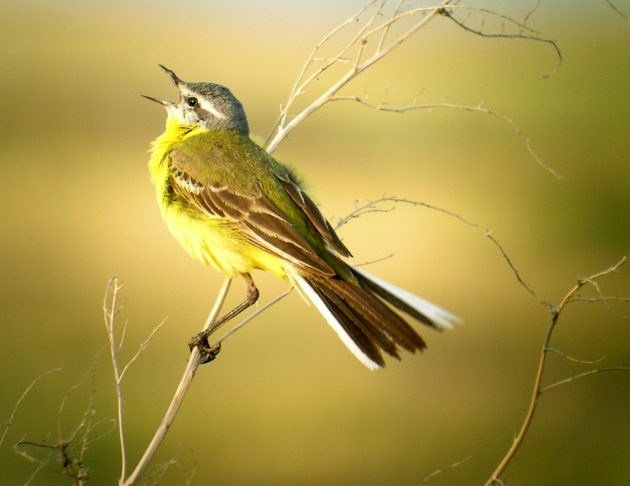
Singing Yellow Wagtail, flava (Estonia May)
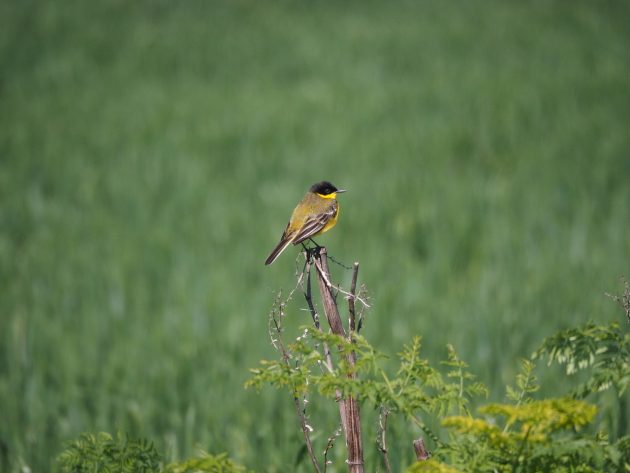
Black-headed Yellow Wagtail, feldegg (Bulgaria, April). This distinctive race breeds in the Balkans
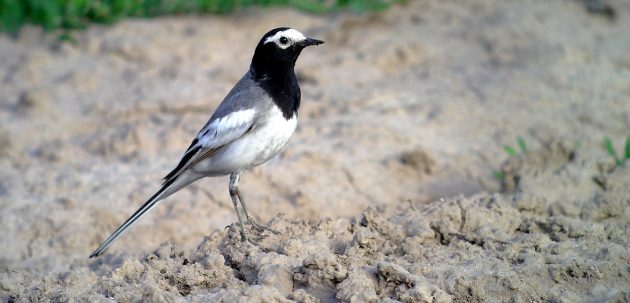
White (Masked) Wagtail, personata (Kazakhstan, June)
Many of the varieties of Pied/White Wagtail look distinctive enough to suggest they deserve the status of being a full species. A classic example is personata, often called Masked Wagtail, a common bird in Kazakhstan, which is where I photographed the individual above. Most taxonomists regard them as simply a sub species of the White Wagtail. However, India’s White-browed Wagtail, M.maderaspatensis, is regarded (I think correctly) as a full species, as is the widespread African Pied Wagtail M.aguimp.
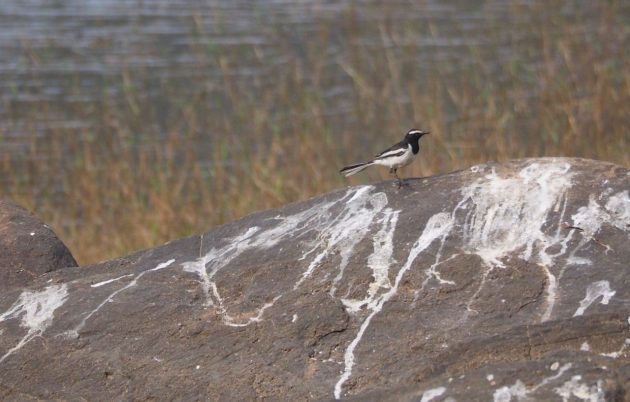
White-browed Wagtail (Central India, March)
Africa has an additional two other species of wagtails. The Mountain Wagtail, M.clara, is the African equivalent of the Grey Wagtail, as it is a long-tailed bird that likes fast-flowing rivers, while the Cape Wagtail, M.capensis, is misleadingly named, as it occurs as far north as Kenya, though is commonest and most widespread in South Africa. It looks like a shorter-tailed, darker version of the Mountain Wagtail.
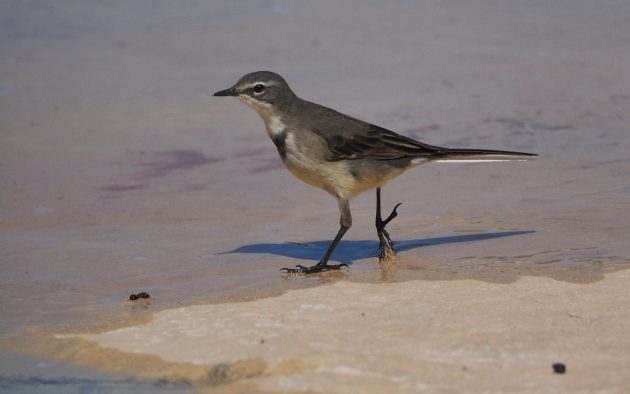
Cape Wagtail (South Africa, March)
My most memorable encounters with yellow wagtails have been in spring in Cyprus, where it’s not unusual to see flocks of 50 or more birds. Here several different races will mingle together, though heading back to different breeding grounds in Europe and Asia. The most numerous on the island is feldegg, easily recognised by the male’s striking black head. However, you can also expect to see plenty of flava, along with thunbergi (Grey-headed), plus, if you are lucky, beama (Syke’s) and even lutea (Yellow-headed). Caution is needed with the latter, for it can be confused with Citrine Wagtail, which is also yellow-headed and a regular, if uncommon, migrant in Cyprus.
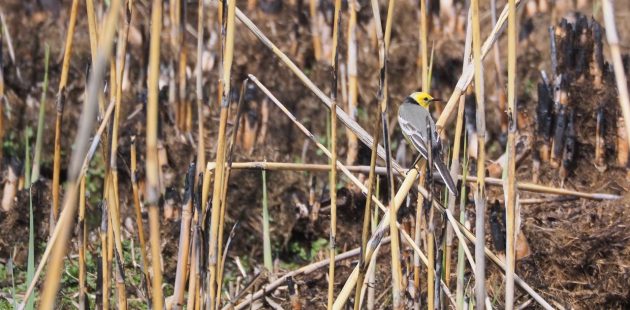
Adult male Citrine Wagtail (Georgia, May)
Citrine Wagtails were once exceedingly rare visitors to the British Isles, but their range has been moving steadily westwards in recent years, and as a result they have been recorded much more frequently here. Most sightings are of young birds in the autumn, but spring records are also increasing.
Two species of wagtails have a toe-hold in North America – both Yellow and White Wagtails breed in Alaska, and, I believe, the Aleutian Islands. The Yellow is the more numerous of the two: one of my American field guides describes it as “numerous in coastal tundra thickets”. They are summer visitors there, migrating back to Asia in the winter. Grey (or, of course Gray) Wagtails are rare spring visitors to the Bering Sea, making them a tricky bird for North American listers to connect with. For the world lister, though, they are one of the easiest birds to find.
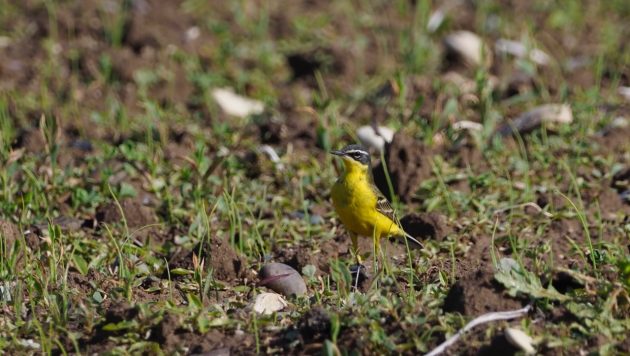
Yellow Wagtail, flava (Cyprus, April)




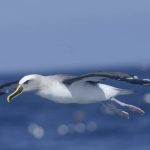
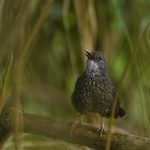
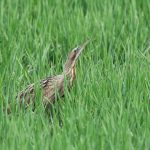
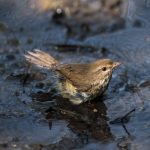



In Dutch the Grey is the “Grote Gele Kwikstaart” (big yellow wagtail) and the Yellow Wagtail is just “Gele Kwikstaart” (yellow wagtail). With the return to more natural waterways in the south and east of the country the Grey is making a comeback. In Portugal I have them in my backyard. I agree with David, they are all lovely elegant birds.